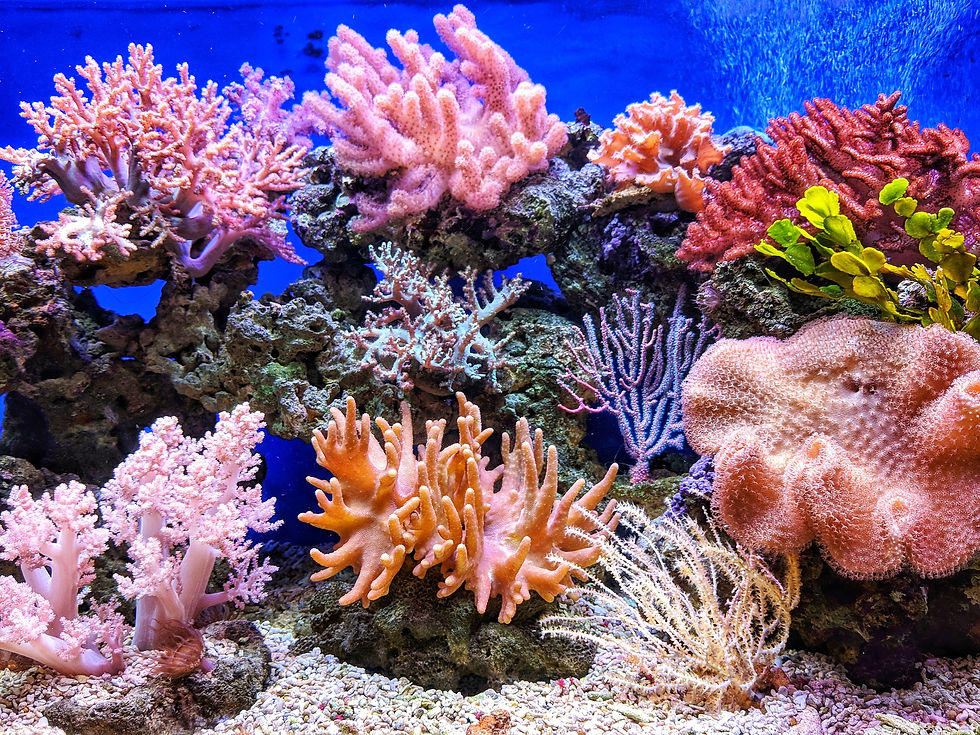Microfibers are Becoming Macro Problems for the Fashion World
- Olivia Wilson

- Jun 15, 2021
- 4 min read
Updated: Aug 16, 2021
The issue at hand
Climate change has been an extremely hot topic in recent years.
Activists like Greta Thunberg, as well as pressure groups such as Extinction Rebellion have been almost unavoidable; reminding us on a daily basis of the damage we are causing the world.
We see images of forest fires decimating rural areas, turning the green wilderness into hot visions of red. Images of polar bears perching onto the last shrivels of icecap in the Antarctic, unaware they are about to drown in the icy depths of their once home. We see images of birds, covered in silky oil. and beached. They are struggling to survive and swamped in plastic waste.
The damage we are doing to the world is clear as day. Evidenced so many times in front of us. Consequently, in 2019, the UK government declared an environment and climate emergency.
We are often reminded of how our excessive car use, inabilities to recycle, and careless use of fossil fuels is causing detriment to the planet.
However, the way the fashion industry and clothing is contributing to the decline of the world’s climate is rarely reported on. Particularly, how microfibres in clothing are affecting the world’s oceans.
Microfibers
Plastic bottles and other plastic ‘junk’ pollute our oceans. This is a fact.

Only 1% of ocean pollution is made up of plastic waste. Microfibres make up 15-31%.
However, these items only make up as little as 1% of the oceans’ pollution. Microfibres in fashion garments pollute between 15-31%.
Microfibres are small plastic thread-like fibres which are shed from clothes in both the manufacturing and washing of them. Statistics have shown that in just one wash, an item of clothing can release 700,000 fibres that eventually make their way into the ocean via the water system. Imagine the fibres released in just one load of washing!
Sat at the bottom of our seas are an estimated 1.4 quadrillion microfibres. Yes, 1.4 quadrillion.
These microfibres are susceptible to absorbing poisonous substances and other pollutants on their journey to the sea floor, worsening their damage to the oceans and contributing further to climate change.
“Tiny microfibres are less visible than a plastic bottle but we need to make more of a connection between the sea and what we do in our everyday lives, including the clothes we wear and put in the wash. It all becomes part of a soup of ocean plastic.” Laura Foster, Marine Conservation Society head
How can we be more conscious about the microfibres in our clothes and make right this climate issue? We need to be particularly conscious due to the current ‘climate emergency.’
How can we fight microfibres?
Reducing how much we buy
“We live in a ‘fast fashion’ culture. When you consider how much we actually buy, it is quite scary.” Imogen Napper, University of Plymouth researcher
Fast fashion is probably one of the biggest causes of the microfibres that are polluting the oceans in modern times. We can choose from thousands upon thousands of styles on websites such as Boohoo and PrettyLittleThing, all at very reasonable prices. This abundance of choice leads us to bulk buying a plethora of trendy pieces.
This is not necessarily a bad thing. For many, money is tight, and these fast-fashion items may be all we can afford.
However, in the manufacturing of these products, a multitude if microfibres are created. A multitude of microfibres are also created when we wash these products time and time again. We must take this into consideration when deciding how much we purchase.
These pieces we will probably decide to throw out in a couple years time to due to them falling out of fashion. Thus, we are left with a myriad of cheap, polyester clothing, which will not biodegrade for thousands of years to come.
Deciding to purchase less and to purchase more ‘investment’ pieces which can last a lifetime will help decrease the number of microfilters entering and polluting our oceans.
Washing consciously
When washing your clothes, a gentle wash at a low temperature (around 30 degrees) can significantly reduce the number of microfibres shedded. Ensuring you always wash a full load so multiple washes don’t have to be done can help.
Drying your clothes on a clothes horse instead of tumble drying also helps reduce microfibres. Tumble dryers increase the fragility of clothes, making them more susceptible to shedding microfibres in the next wash.
The number of microfibres polluting the seas can be easily reduced by following these steps when cleaning clothes.
Shopping more sustainably
Synthetic materials like polyester, acrylic and nylon all create microfibres, due to them being forms of plastic.
Buying clothing garments with a reduced percentage of synthetic fabric or ones made from cotton, wool and hemp can, again, help reduce the amount of microfibres entering the ocean. However, as clothes made from organic materials are typically more expensive, this may not be an option for all.
Just by being more conscious when shopping and washing your clothes can really help to reduce microfibres!
So…
The world is in our hands.
Reducing microfibres entering the oceans via our fashion consciousness is just one way we can help to protect it.



Comments